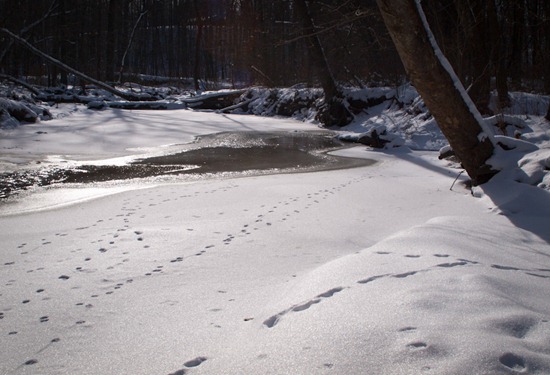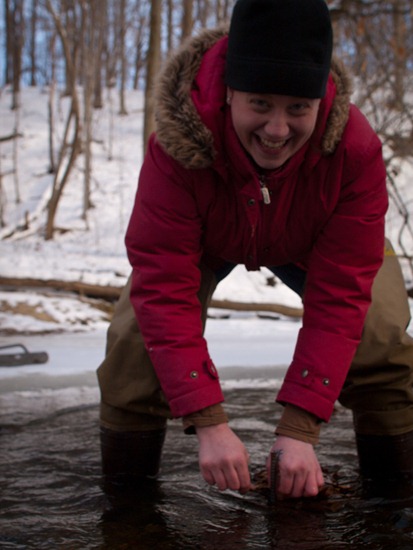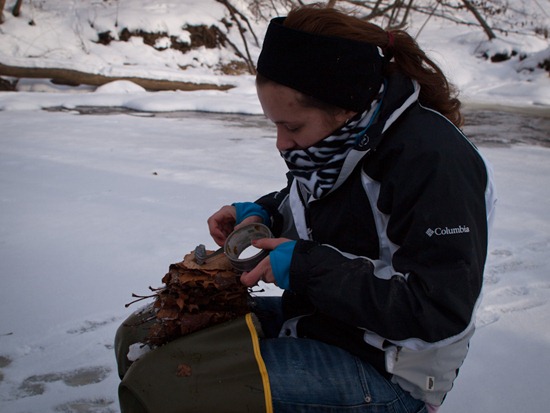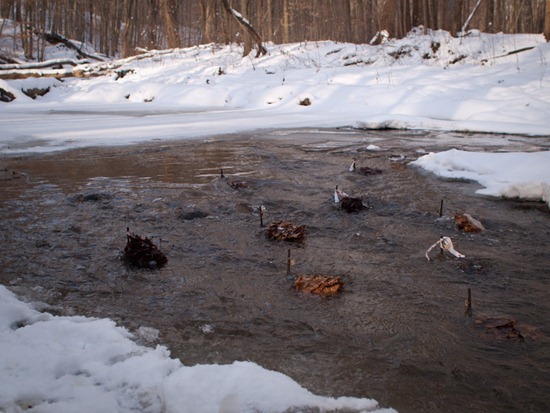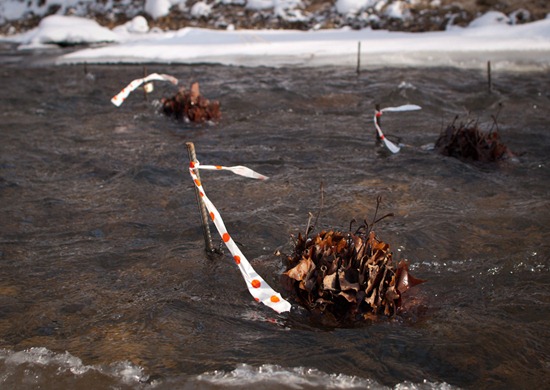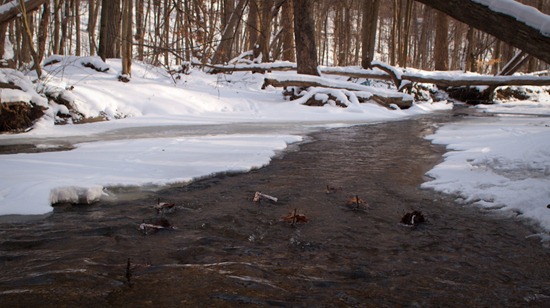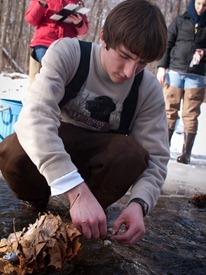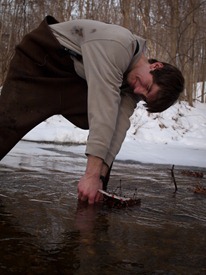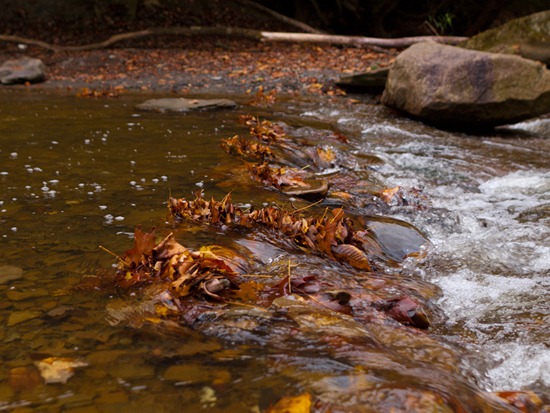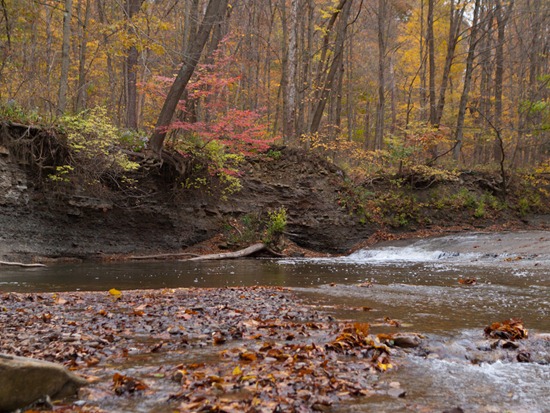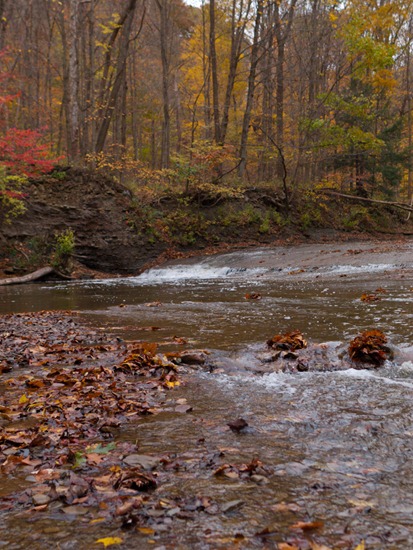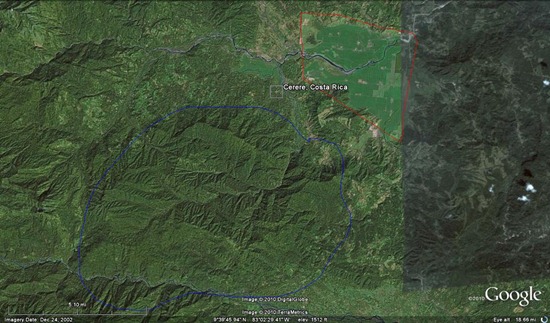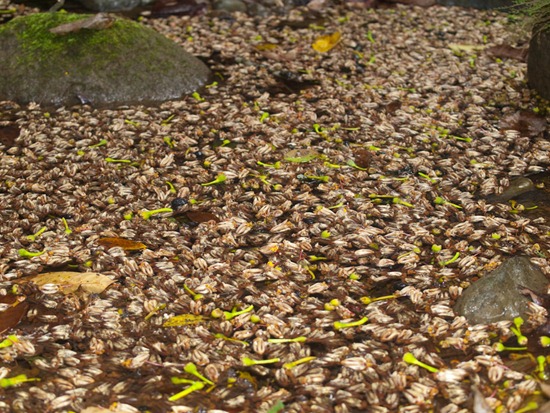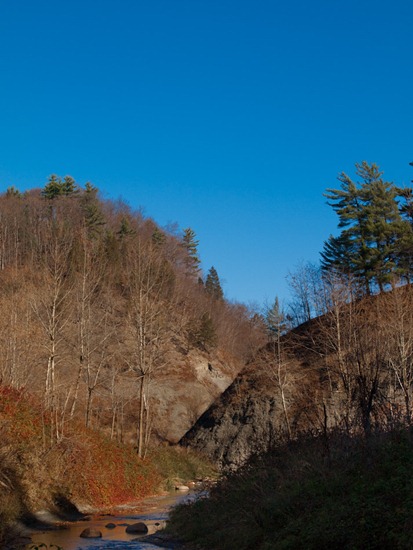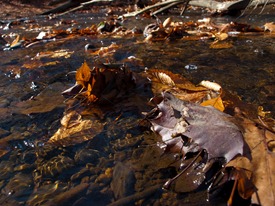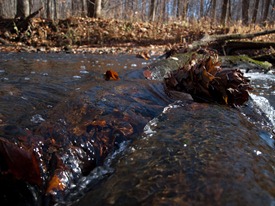Today, with the much-appreciated help of a few volunteers, Jessica’s artificial loaves of leaves were set in the stream. The next couple of weeks will include some intense sampling and processing efforts, but given the work done today, it won’t be a problem.
Nine artificial loaves were attached to stakes set into the stream bed in five different riffles. The nine include two leaf treatments, previously conditioned in the stream and unconditioned. Jessica will be sampling them to examine winter invertebrate colonization and FPOM deposition.
